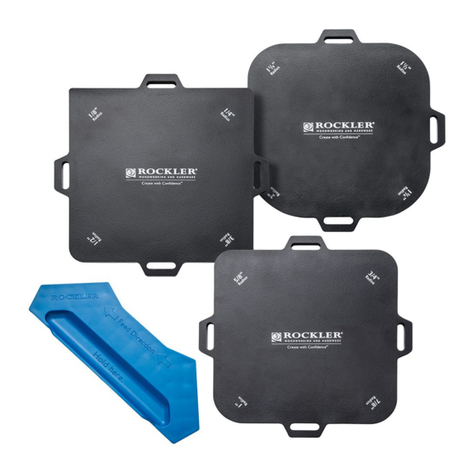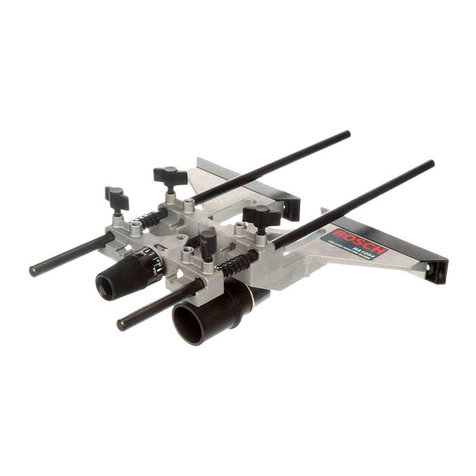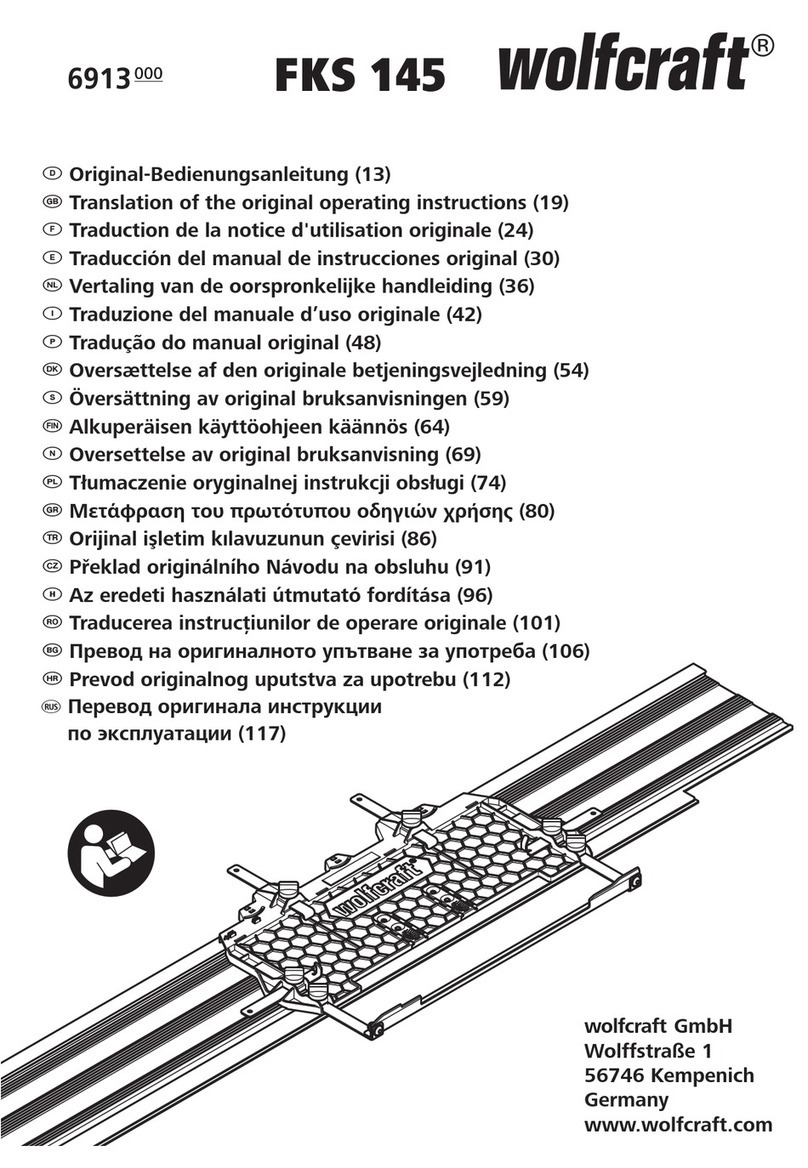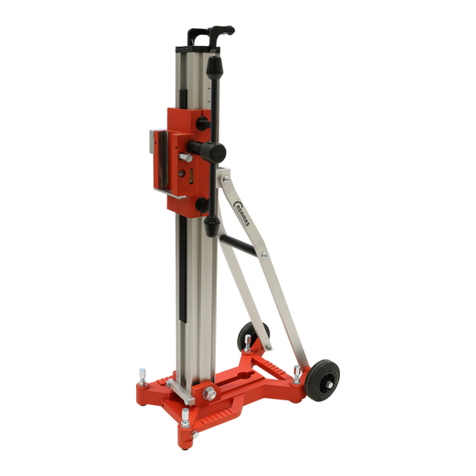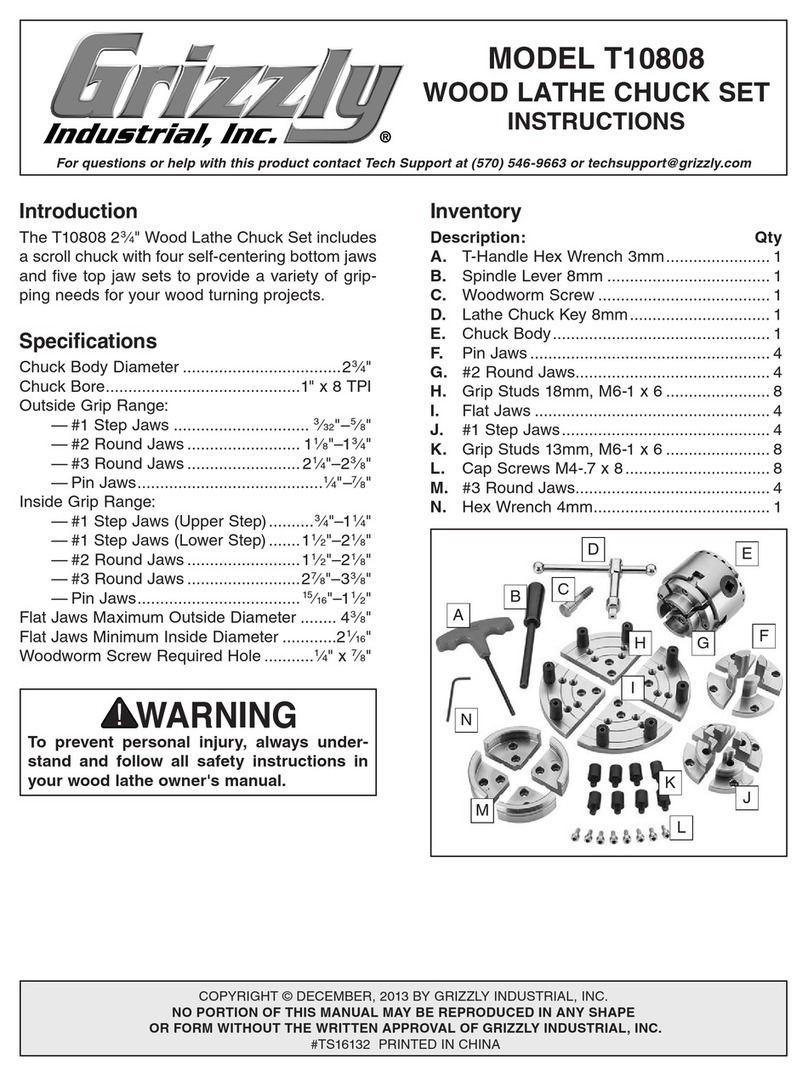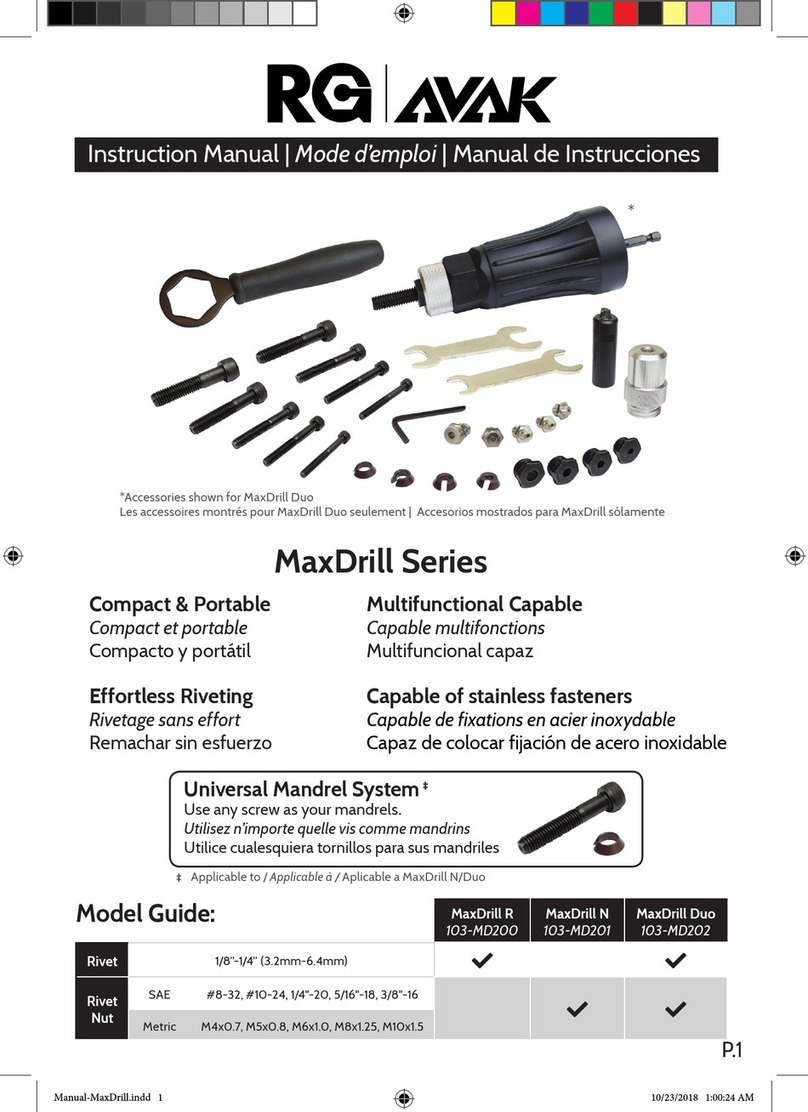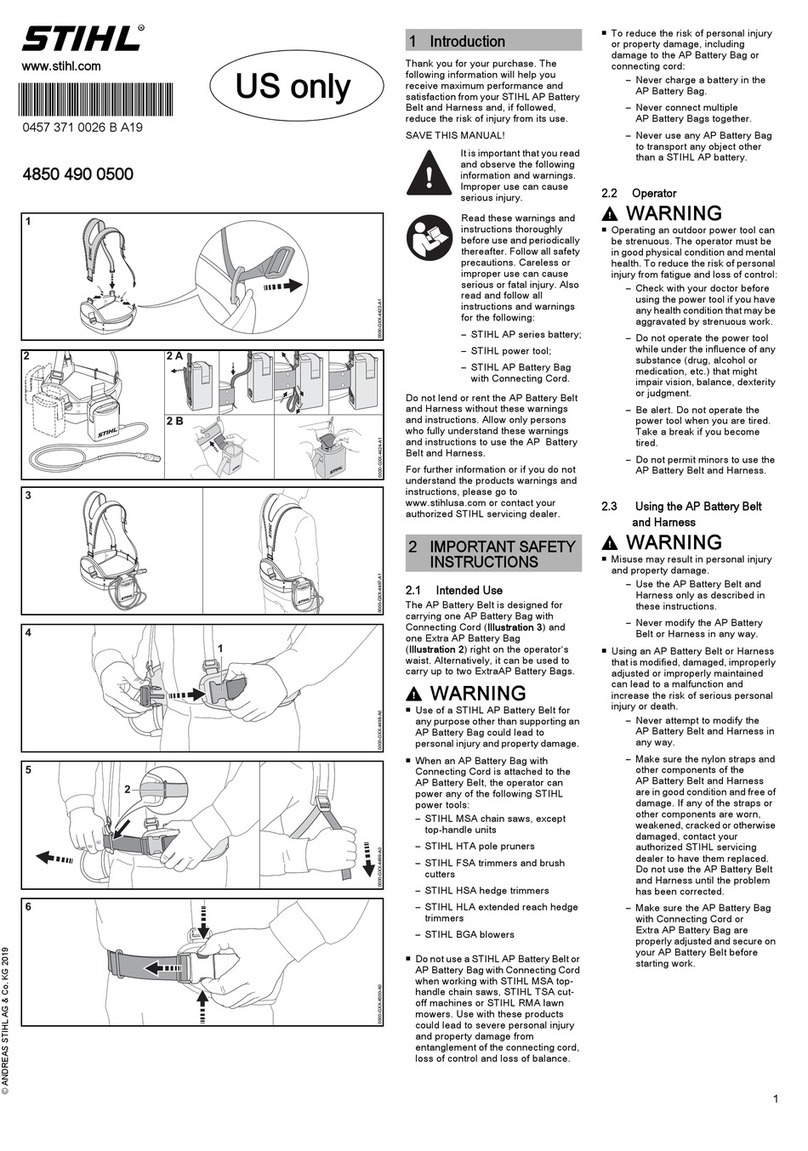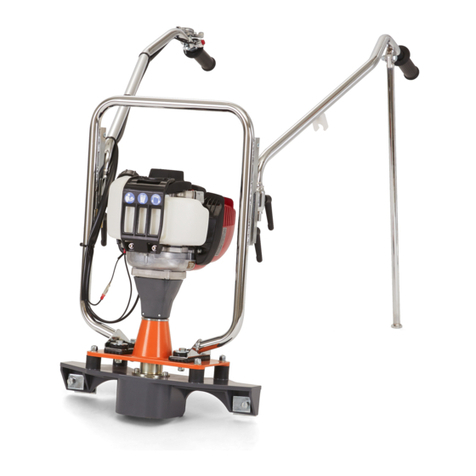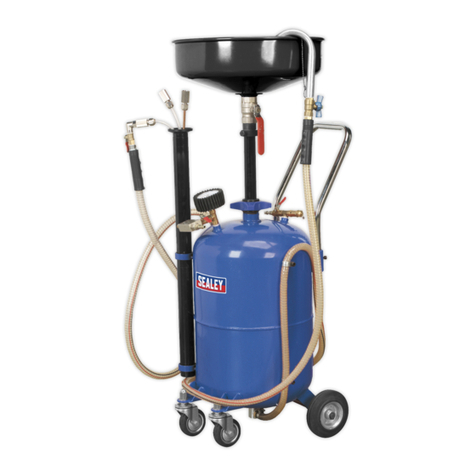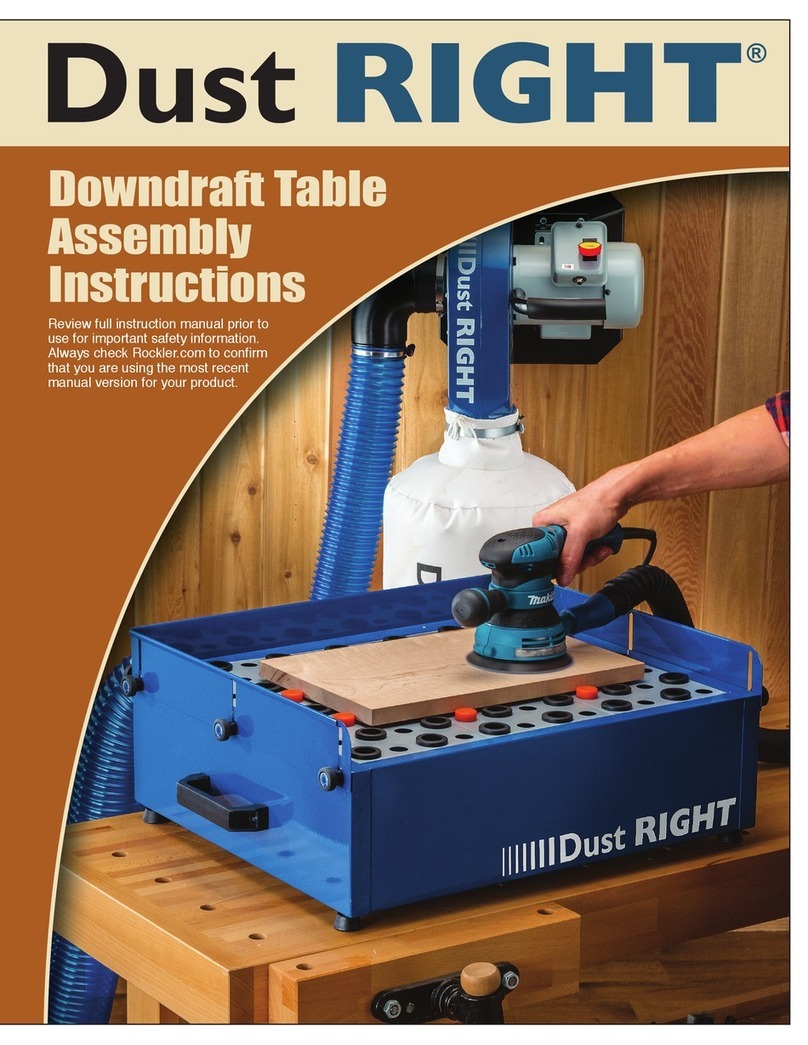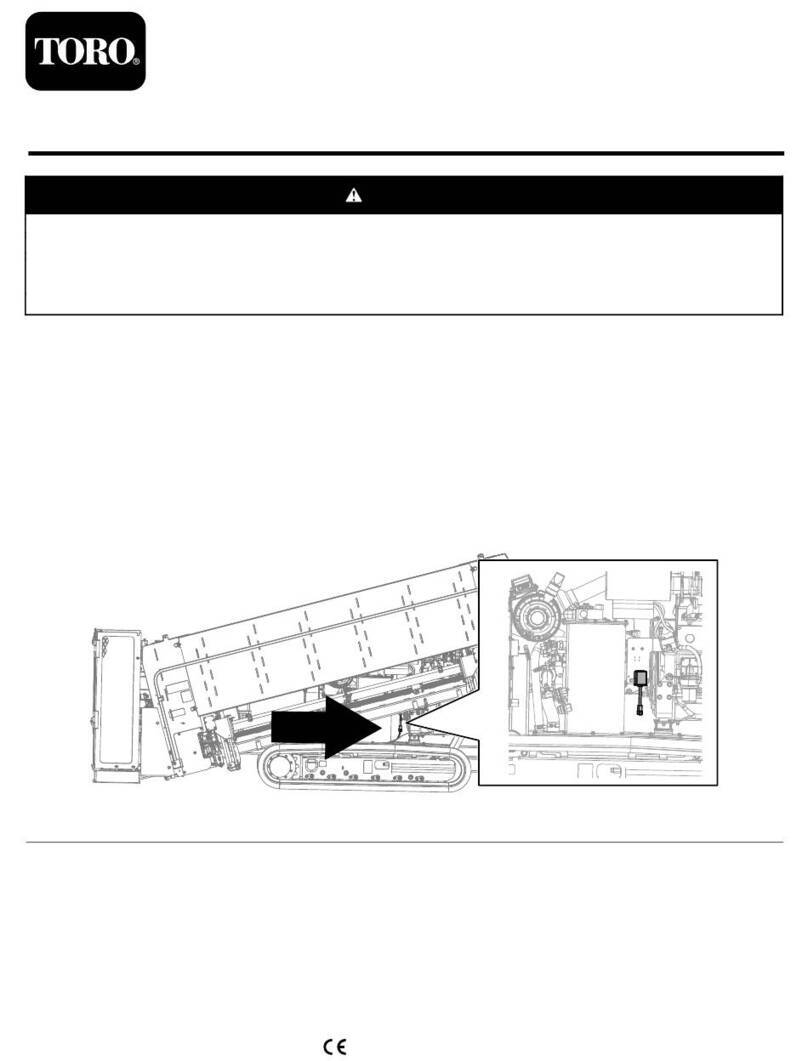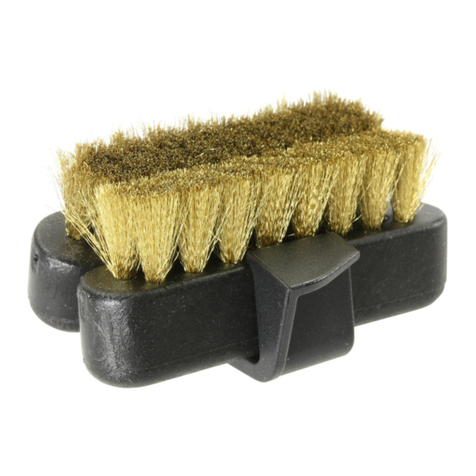Siegmund 009950 Operational manual

Translation of the original operating manual
Rotating table
height adjustable
009950 (stationary) 009955 (mobile)
Bernd Siegmund GmbH
Keep for future reference! V1.0 / 01.10.2019

Operating manual –Rotating table 1 General information
2 / 15
Imprint
Manufacturer (service address)
Bernd Siegmund GmbH
Landsberger Strasse 180
86507 Oberottmarshausen
Germany
This operating manual contains descriptions and instructions to enable you to operate the rotating table and to
perform simple upkeep tasks.
It does not describe any complicated upkeep or repair work on the machine and components. For such activities,
please contact Bernd Siegmund GmbH.
You have further questions or requirements? We will be happy to help.
Warranty
The legal warranty obligations and periods shall apply.
All warranty claims shall become void if the product is used in a manner not corresponding to its intended purpose,
is subjected to unauthorised technical alterations or is opened (modification).
Bernd Siegmund GmbH shall not be liable for any damage or accidents that are attributable to use in a manner not
corresponding to the product’s intended purpose, to unauthorised modification of the product or to non-observance
of this operating manual.
© 2019 Bernd Siegmund GmbH
This operating manual, its reproduction by electronic means and on paper as well as translations of this operating
manual are protected by copyright.

Operating manual –Rotating table 1 General information
3 / 15
Contents
1General information ............................................................................................................................ 4
1.1 Target group.......................................................................................................................................... 4
1.2 Copyright ............................................................................................................................................... 4
2Safety.................................................................................................................................................... 4
2.1 Explanation of safety instructions and warning notices......................................................................... 4
2.2 Obligations of owner and personnel...................................................................................................... 6
2.2.1 Obligations of owner, organisational measures..................................................................................... 6
2.2.2 Obligations of personnel........................................................................................................................ 6
2.3 General safety instructions.................................................................................................................... 7
3Product................................................................................................................................................. 8
3.1 Product description................................................................................................................................ 8
3.2 Operator positions ................................................................................................................................. 8
3.3 Specifications ........................................................................................................................................ 9
3.4 Safety equipment .................................................................................................................................. 9
3.5 Intended use........................................................................................................................................ 10
3.6 Foreseeable misuse ............................................................................................................................ 10
3.7 Rating plates ....................................................................................................................................... 11
3.7.1 Article-Nr. 009950 (stationary)..............................................................................................................11
3.7.2 Article-Nr. 009955 (mobile)...................................................................................................................11
4Transport............................................................................................................................................ 11
4.1 Delivery ............................................................................................................................................... 11
4.2 Safety .................................................................................................................................................. 11
4.3 Mounting and removing perforated plate............................................................................................. 12
5Operation ........................................................................................................................................... 13
5.1 Safety .................................................................................................................................................. 13
5.2 Raising and lowering rotating table ..................................................................................................... 13
5.3 Mounting components ......................................................................................................................... 13
6Upkeep and maintenance................................................................................................................. 13
6.1 Servicing.............................................................................................................................................. 13
6.2 Lubrication........................................................................................................................................... 14
6.3 Safety .................................................................................................................................................. 14
7Decommissioning ............................................................................................................................. 14
8Declaration of conformity................................................................................................................. 15

Operating manual –Rotating table 1 General information
4 / 15
1General information
IMPORTANT
Read carefully before use!
Keep for future reference!
This operating manual contains information on how to safely use the rotating table (article number 009950 or
009955), which is a machine used for raising and lowering perforated plates on which components to be welded or
otherwise processed are mounted.
The height adjustable rotating table is referred to below as “rotating table” or “machine”.
Before commencing their activities, all persons who are tasked by the owner with the operation, maintenance or
repair of the machine must have read and understood the operating manual, in particular "2 Safety". This especially
applies to personnel who are only occasionally tasked with work on the machine, e.g. maintenance technicians and
external personnel.
WARNING
Observe the operating manual:
•All persons who operate the rotating table must have read the operating manual beforehand.
The owner must ensure that at least one copy of the operating manual is available at the machine and accessible to
the target persons who handle the product.
The operating manual is part of the machine and must be kept throughout its service life.
The operating manual must be passed on to every subsequent owner or user of the machine.
The manufacturer shall not be liable for injuries and damage that are attributable to non-observance of the
operating manual and in particular of the safety instructions given in the operating manual.
1.1 Target group
The target group of this operating manual are all persons who are tasked by the owner with activities (e.g.
operation, setup, cleaning, maintenance, repair) on the rotating table. This also applies to external personnel.
1.2 Copyright
This operating manual as well as the operating documents remain the intellectual property of Bernd Siegmund
GmbH. They are supplied to the customer/owner as an integral part of the product.
Without our explicit consent, these documents may be neither duplicated nor made available to third-party
companies, in particular competing companies.
2Safety
2.1 Explanation of safety instructions and warning notices
This operating manual contains safety instructions and warning notices which are intended to prevent injury and
damage. It is essential to observe the warning notices. Failure to observe these notices can lead to injury, damage,
destruction of components and to inoperability of the rotating table.
Presentation of safety instructions and warning notices
Safety instructions and warning notices are clearly highlighted. They have the following structure:

Operating manual –Rotating table 2 Safety
5 / 15
WARNING
Type of hazard
Description, cause and source of the hazard
•Measure to avert the hazard
optional: sub measure
The following signal words are used:
WARNING
Warns of potential severe injury or risk to life
Indicates a potentially hazardous situation that can lead to death or
severe injury if the safety measures are not observed.
CAUTI ON
Warns of a hazard
Indicates a potentially hazardous situation that can lead to minor or slight
injury if the safety measures are not observed.
N O T E
Warns of damage
Failure to observe this notice can result in damage to the machine or its
surroundings.
Simplified safety instructions and warning notices
Safety instructions and warning notices may deviate from the form shown above if they are also understandable
and actually more succinct in simplified form.
Simplified safety instructions and warning notices consist of
−Signal word with coloured background corresponding to the warning levels
−Information text
Example of a simplified warning notice, "Warning" hazard level:
Warning symbols
The following symbols indicate hazards:
General hazard
Hand injuries hazard
Suspended loads hazard
Fall hazard
Personal protective equipment
The following symbols indicate that personal protective equipment must be worn:
Use hand protection
Use foot protection
WARNING
•Text of the simplified safety instruction and warning notice

Operating manual –Rotating table 2 Safety
6 / 15
2.2 Obligations of owner and personnel
2.2.1 Obligations of owner, organisational measures
The owner tasks in-house personnel or external personnel with the operation, maintenance, repair, etc. of the
rotating table.
Hazard notices
The owner must ensure that the safety instructions and warning notices for the product are observed and that the
safety instructions and warning notices as well as the information signs are in a clearly legible condition.
Modifications
Without the consent of the manufacturer, it is not permitted to make any modifications (retrofits, additions) to the
machine if such modifications may impair safety. This also applies to the installation of safety devices.
Checks, servicing
The servicing as specified in section "6 Upkeep and maintenance" must be observed.
Personnel selection, personnel qualification
Work on the machine may be performed only by reliable personnel authorised by the owner. Activities at the
rotating table require the knowledge of a skilled and trained person; additionally, an appropriate technical
qualification is required for certain activities.
−The owner must establish the responsibilities of the operating personnel, also with regard to safety-
compliant conduct, and empower the operating personnel to refuse to carry out unsafe activities.
−Personnel who are in the training, instruction, learning or onboarding phase, as well as persons under the
age of 18 may work on the rotating table only if they are under the constant supervision of an experienced
person.
The owner must take organisational and instructive measures to ensure that the relevant safety standards and
safety rules are observed by persons who are tasked with operation, maintenance and repair of the machine.
Personal protective equipment
The owner is obliged to provide personnel with the required personal protective equipment, e.g. protective gloves
and safety footwear.
The owner must ensure that only personnel with the required protective equipment work on the rotating table.
2.2.2 Obligations of personnel
All persons who are tasked with working on the machine are obliged
−to conduct themselves in a safe and responsible manner at all times in order to ensure occupational health
and safety;
−to follow and comply with national laws and regulations as well as the applicable in-plant regulations
defined by the owner with respect to accident prevention, work safety and firefighting;
−to perform the following if the operating behaviour of the machine changes and if malfunctions occur which
jeopardise the safety of persons or endanger the machine:
–immediately shut down the machine;
–immediately report the faults to the relevant authority / person; and
–notify the affected personnel.

Operating manual –Rotating table 2 Safety
7 / 15
2.3 General safety instructions
The rotating table may be used only if it is fully functional and in a technically flawless condition.
The rotating table must undergo a visual inspection before each use to ensure that it is in perfect working order.
−Check for
–damage;
–corrosion; and
Also observe the following basic rules:
−In the event of unusual operating behaviour, noises, etc., find the cause immediately.
WARNING
•Wear personal protective equipment on the machine: protective gloves, safety footwear
-When moving the rotating table on its castors and when positioning:
-Move the rotating table slowly.
-Be particularly careful on sloping surfaces; take additional safety measures if
necessary (e.g. request the assistance of additional persons).
-Always position the rotating table on a level surface. After positioning, secure the
rotating table using the brakes to prevent it from rolling away.
WARNING
Crushing hazard
Components or the perforated plate may fall off the rotating table if they are unstable and not
fastened securely.
•Position the perforated plate centrally and screw it down. Use only perforated plates with
mounting holes supplied by the manufacturer. Other perforated plates must be approved
by the manufacturer.
•Transporting using a crane: Leave the perforated plate secured to the crane until the
perforated plate has been screwed to the rotating table.
•Securely clamp all components to the perforated plate. Distribute the components evenly
on the perforated plate.
•Nominal load: 1.000 kg. The perforated plate and the components mounted on it must not
exceed the nominal load.
WARNING
Crushing hazard
By raising or lowering through rotation of the rotating table fingers can be crushed by the
spindle.
•Do not reach into the spindle.
•While rotating do not crawl into the area below the perforated plate. Head is not to be put
on the same height as the rotating perforated plate.
•Ensure that there are no other persons at the rotating table while it is being raised or
lowered.
CAUTI ON
Fall hazard
Persons may fall from the rotating table if they climb onto it.
•It is forbidden to walk on and climb onto the rotating table.

Operating manual –Rotating table 3 Product
8 / 15
WARNING
Crushing hazard
Persons can be crushed while the perforated plate is being lowered into position. There is also
a danger of crushing if the perforated plate tips or falls off.
•The perforated plate should be transported using a crane where possible:
Attach the perforated plate securely to the transport equipment: Mount the transport
brackets to the perforated plate; with 1 transport bracket, mount it centrally; with several
transport brackets, mount them in such a way that the perforated plate remains stable
and level during transport.
Insert the slings into the transport brackets.
Use only transport equipment, rotating gear and slings that are suitable for the load.
Observe the weight specification of the perforated plate.
Observe the applicable regulations regarding transport using a crane.
•Ensure that the perforated plate is transported safely:
Ensure that the perforated plate is not tilted when lifted.
Move the load slowly and smoothly.
Avoid unstable positioning of the load on the transport equipment; avoid rocking and
swinging.
Set down the load slowly.
•The perforated plate must be transported by trained, authorised personnel only.
•Only those persons required for the work are allowed to be in the danger area. Do not stand
below suspended loads.
3Product
3.1 Product description
Different perforated plates on which components are secured for manual welding work or other processing
operations (e.g. milling, sawing or grinding) are mounted on the rotating table. These components can then be
moved to the desired working height by raising or lowering the rotating table by turning the rotation-unit/perforated
plate.
The rotating table 009955 is mobile and can be moved on its castors. It can therefore also be used to transport the
components.
3.2 Operator positions
Operator positions are
−on all sides of the perforated plate for
–positioning and mounting the components to be welded and/or processed;
–welding or other processing operations; and
–positioning and screwing down the perforated plate.
−at the locking-unit
–Locking the rotation of the rotation-unit/perforated plate
–raising and lowering the work surface.
−on the castors with brakes for
–locking the castors; and
–releasing the castor brakes.

Operating manual –Rotating table 3 Product
9 / 15
The machine consists of the following components and systems:
No.
Product component
Article-Nr. 009950
(stationary)
Article-Nr. 009955
(mobile)
1
Perforated plate
X
X
2
Rotation-unit
X
X
3
Underframe
X
X
4
Locking-unit
X
X
5
Grease nipple
X
X
6
Castors with brakes
-
X
7
Baseplate
X
-
3.3 Specifications
Article-Nr. 009950
(stationary)
Article-Nr. 009955
(mobile)
Dimensions, approx.
(length x width x height)
785 x 785 x 740 - 1.100 [mm]
(excl. perforated plate)
795 x 795 x 740 - 1.100 [mm]
(excl. perforated plate)
Weight (approx..)
70 kg (excl. perforated plate)
Operating environment
Industrial and commercial sectors
Nominal load
1.000 kg
grease
3.4 Safety equipment
The machine has the following safety equipments:
Description
Location
Locking unit
Front
Brakes
Castors
1
2
3
4
5
6
7

Operating manual –Rotating table 3 Product
10 / 15
3.5 Intended use
The rotating table is used for mounting components for manual welding work or other operations (e.g. sawing,
milling), for adjusting their height (and for transporting them).
The rotating table 009955 has castors for moving the rotating table. By turning the rotation-unit, the perforated plate
(i.e. the work surface on which the components are mounted) can be moved to the correct height.
The perforated plates can be replaced. Only perforated plates approved by the manufacturer may be mounted on
the rotating table.
Only perforated plates from Bernd Siegmund GmbH may be mounted. Perforated plates from other manufacturers
as well as perforated plates that have features different to those specified above must also be approved beforehand
by the manufacturer of the rotating table.
Each perforated plate must be mounted centrally on the rotating table. Only perforated plates that can be mounted
centrally are permissible.
Components may be transported, welded or otherwise processed on the rotating table only if they are in a stable
position and screwed or clamped securely to the perforated plate. Where possible, the weight of the components
must be distributed centrally and uniformly on the perforated plate.
Nominal load: 1.000 kg. The combined weight of the perforated plate and components must not exceed the nominal
load.
If used outdoors, the rotating table must be protected from moisture and, if necessary, must be dried in order to
prevent corrosion.
The machine and its components must not be modified without first consulting the manufacturer.
Intended use also includes:
−use of the rotating table only when it is in perfect working order;
−compliance with the operating and ambient conditions specified by the manufacturer; and
−compliance with the procedures described in this operating manual and observance of all safety
instructions.
WARNING
•Use the rotating table and its components only in accordance with their intended use and
specifications.
The manufacturer shall not accept liability for injuries and damage resulting from inappropriate
use of the rotating table.
3.6 Foreseeable misuse
Misuse arises if
−impermissible perforated plates or perforated plates not approved by the manufacturer are mounted on the
rotating table
−the perforated plate is not or cannot be mounted centrally on the rotating table;
−the components not secured to the rotating table in such a way that their weight is distributed uniformly on
the perforated plate.
WARNING
•Do not use the rotating table if the rotating table or its components are damaged.

Operating manual –Rotating table 4 Transport
11 / 15
3.7 Rating plates
3.7.1 Article-Nr. 009950 (stationary)
3.7.2 Article-Nr. 009955 (mobile)
4Transport
4.1 Delivery
The rotating table is delivered by the manufacturer or a forwarding agent with appropriately qualified personnel.
4.2 Safety
When the rotating table is moved on its castors, the perforated plate is replaced, the rotating table is transported
using other transport equipment, individual components are transported (e.g. for repair or replacement) or
components to be processed are transported, injuries may be caused by the rotating table, perforated plate or
falling or tipping components. Therefore, observe the following safety instructions:
−When moving the rotating table on its castors:
–Push the rotating table slowly. Be particularly careful on sloping surfaces; take additional safety
measures if necessary (e.g. request the assistance of a second person).
–Do not pull the rotating table.
−Always position the rotating table on a level surface. After positioning, secure the rotating table using the
brakes to prevent it from rolling away; secure using additional means (e.g. wheel chocks) where necessary.
−Before transporting: Remove any components not mounted on the perforated plate
−When replacing the perforated plate and transporting the rotating table or components, observe the
following safety measures, e.g.
–attach the perforated plate, rotating table and components to be transported securely to the transport
equipment.
–Use transport brackets suitable for replacing the perforated plate.
–Secure the rotating table to the crane using straps;
–Move the load slowly and smoothly.
–Avoid unstable positioning of the load on the transport equipment and avoid rocking.
–Use only transport equipment, rotating gear and slings suitable for the load (perforated plate, rotating
table or component). Observe the weight specifications of the components to be moved.
−Only authorised and trained or suitably qualified persons are allowed to transport the perforated plate,
rotating table or individual components. They are responsible for correct and safe transport.
−All persons who are not required for the work must leave the danger area. Do not stand below suspended
loads!

Operating manual –Rotating table 4 Transport
12 / 15
4.3 Mounting and removing perforated plate
To mount the perforated plate:
−Choose fitting fixture points for each perforated plate (according to the figure below)
▪16: Fixture points for system 16
•all cleared sizes of perforated plates
▪22&28 (<1500x1000): Fixture points for systems 22 and 28
•Size of perforated plate: smaller than1500x1000 [mm]
▪22&28 (1500x1000): Fixture points for system 22 and 28
•Size of perforated plate: 1500x1000 [mm]
−Move the perforated plate to the rotating table using suitable transport equipment (e.g. crane).
−Position the perforated plate centrally above the rotating table.
−Slowly lower the perforated plate.
−When the perforated plate is located immediately above the adjustment screws where it will be attached,
pull the perforated plate to the precise position by hand if necessary.
−Set the perforated plate down onto the adjustment screws.
−Secure the mounting screws on the adjustment screws.
−The perforated plate should remain secured to the transport equipment until the perforated plate has been
securely attached.
−Use the adjustment screws to precisely adjust the perforated plate so that it is as horizontal and level as
possible.
To remove a perforated plate:
−Remove all components from the perforated plate.
−Attach the transport bracket(s) to the perforated plate.
−Insert slings through the transport bracket(s).
−Raise the transport equipment until the rotating gear is slightly tensioned and then secure the perforated
plate to the transport equipment.
−Undo all mounting screws securing the perforated plate to the adjustment screws.
−Lift off the perforated plate.
WARNING
•Avoid rotating off at an angle; the pulling force must be applied vertically upwards.
•Avoid swinging and rocking when rotating and transporting.

Operating manual –Rotating table 5 Operation
13 / 15
5Operation
5.1 Safety
Observe the following safety instructions:
−The rotating table 009955 is mobile and can be moved on its castors. If the rotating table is to be moved to
a different installation location, observe the safety instructions in section 4.
−Always position the rotating table on a level surface. After positioning, secure the rotating table using the
brakes to prevent it from rolling away.
−Provide sufficient space at the installation location.
−Visually inspect the rotating table before each use to ensure that it is in perfect working order.
–The rotating table must not be damaged and must not exhibit any significant corrosion. It must be fully
functional and in a technically flawless condition.
–The perforated plate must be securely attached.
Only authorised and trained persons are allowed to use the rotating table. They are responsible
for ensuring that the rotating table is used correctly and safely.
5.2 Raising and lowering rotating table
The rotating table is raised by turning the rotating unit/perforated plate counter clockwise until the desired height is
reached. Turning the upper part clockwise lowers the rotating table.
5.3 Mounting components
Components are best mounted on the perforated plate when the perforated plate is already set to the appropriate
working height. It is, however, possible to adjust the height later.
When the components come to rest on the perforated plate, they must be fixed in place using suitable clamping and
fastening elements.
Components, clamping and fastening elements can be mounted securely using the system holes in the perforated
plate. The clamping and fastening elements must be suitable for the components and their weight as well as for
attachment to the perforated plate. They must be able to fix the components in a stable position that prevents them
from tipping or slipping.
When mounting the components on the perforated plate, observe the following safety instructions:
−The safety instructions in sections 4 and 5.1 apply when transporting the components.
−Before components are mounted, the rotating table must be on a level surface and secured using the castor
brakes to prevent it from rolling away.
−During mounting, all components on the perforated plate must be secured to prevent them from tipping over
and falling off.
−Ensure that there is nobody in the danger area: Only those persons required for the activity are allowed to
remain at the rotating table.
6Upkeep and maintenance
Upkeep and maintenance ensure that the rotating table is always safe to use.
6.1 Servicing
Rotating table at regular, e.g. monthly, intervals:
−Check for damage, wear and corrosion.
−Check that all connections are tight. Refasten loose connections as necessary. All components must be
mounted securely.
−Replace any defective components.

Operating manual –Rotating table 7 Decommissioning
14 / 15
WARNING
•Maintenance work on the rotating table that is not performed promptly or is performed
incorrectly may pose a risk to persons after the rotating table is put back into regular
operation.
6.2 Lubrication
To ensure low-noise and low-wear operation of the rotating table, regular lubrication is required (grease nipple).
The interval depends on the frequency and intensity of use. Lubrication at least once a year is recommended.
Interval (recommended)
Annually
Grease (minimum requirement)
DIN 51502 K2K-30
6.3 Safety
Before commencing work (e.g. maintenance or repairs), the rotating table must be secured using the castor brakes
to prevent it from rolling away.
Maintenance and repair work may only be performed if there are no components on the table.
WARNING
Unsuitable replacement parts may result in injuries to persons and damage to the rotating table.
•Use only original replacement parts from the manufacturer.
•If you require replacement parts, contact the service address.
Correct upkeep of the rotating table requires appropriately trained specialist personnel. All maintenance and upkeep
work may be performed only by trained and authorised specialist personnel qualified to carry out the tasks
concerned.
The owner is responsible for assigning specialist personnel and for providing the appropriate training.
Contact Bernd Siegmund GmbH in the case of defective components or modifications to the rotating table.
Maintenance staff and specialist personnel are responsible for ensuring that the work is performed safely and that
the appropriate health and safety measures are taken. They must have read and understood the relevant
regulations before starting work.
7Decommissioning
Disassembly may be performed by specialist personnel only.
WARNING
•Lower the rotating table to its lowest position
N O T E
Final decommissioning and disposal require complete scrapping.
The product is dismantled into its component parts.
The parts must be recycled, disposed of in accordance with local regulations or returned to the
manufacturer.
Any residual media collected in suitable containers and disposed of properly.

Operating manual –Rotating table 8 Declaration of conformity
15 / 15
8Declaration of conformity

This manual suits for next models
1
Table of contents

